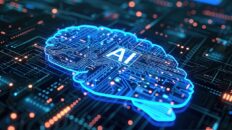At its core, ChatGPT operates on the transformer architecture, a revolutionary model in the field of artificial intelligence that has transformed natural language processing (NLP). This model, introduced in the seminal paper “Attention Is All You Need” by Vaswani et al. in 2017, marks a significant departure from traditional neural network models. Unlike its predecessors that relied heavily on recurrent neural networks (RNNs) or convolutional neural networks (CNNs), the transformer model employs a sophisticated attention mechanism that allows for unparalleled efficiency and efficacy in processing and understanding sequential data.
The Transformer Model
The transformer model is a type of neural network architecture specifically designed to handle sequences of data, such as text. Unlike RNNs and LSTMs, which process data sequentially and suffer from issues like vanishing gradients, transformers leverage parallelization and attention mechanisms to overcome these limitations. This architecture enables the model to manage long-range dependencies in text and contextual relationships with remarkable precision and speed. By processing all tokens simultaneously rather than one at a time, transformers significantly enhance computational efficiency and scalability.
Key Components of the Transformer:
1. Self-Attention Mechanism
The self-attention mechanism is the cornerstone of the transformer architecture. It allows the model to consider each word in a sentence in the context of every other word, rather than just the adjacent ones. This capability is crucial for understanding the relationships and dependencies between words that are far apart in a sentence.
How It Works:
- Attention Scores Calculation: For a given word, the self-attention mechanism computes a set of attention scores with every other word in the sentence. These scores determine the relevance or weight of each word in relation to the given word.
- Weighted Representations: Using these scores, the model creates weighted representations of the input words. This means that the importance of each word is considered based on its relevance to other words in the context. For instance, in the sentence “The cat sat on the mat,” the word “cat” would pay more attention to “sat” and “mat” rather than “The” or “on.”
- Contextual Embeddings: These weighted representations are then used to generate contextual embeddings for each word, reflecting its role and significance within the sentence. This allows the model to better understand nuances in meaning and relationships between words.
Example:
Suppose we have the sentence “The cat sat on the mat.” For the word “cat,” the self-attention mechanism would compute how much attention to pay to each of the other words in the sentence, resulting in a more nuanced representation of “cat” that incorporates the context provided by words like “sat” and “mat.”
2. Multi-Head Attention
Multi-head attention expands upon the self-attention mechanism by employing multiple attention heads in parallel. Each attention head operates independently and focuses on different aspects of the input sequence. By doing so, multi-head attention captures various types of relationships and contexts within the data.
How It Works:
- Multiple Attention Heads: Instead of a single attention mechanism, multi-head attention uses several parallel mechanisms. Each head performs its own self-attention operation, generating different sets of attention scores and weighted representations.
- Combining Results: The outputs from all attention heads are concatenated and linearly transformed to produce the final output. This combination allows the model to integrate diverse contextual information and capture a richer representation of the input sequence.
Example:
In processing the sentence “The cat sat on the mat,” different attention heads might focus on different relationships. One head could emphasize the relationship between “cat” and “sat,” while another might focus on the positional relationship between “sat” and “mat.” The aggregated output provides a comprehensive understanding of the sentence.
3. Positional Encoding
Transformers lack an inherent understanding of word order due to their parallel processing nature. To address this, positional encoding is introduced to provide information about the relative positions of words in a sequence.
How It Works:
- Encoding Positions: Positional encoding adds a unique representation to each word based on its position in the sequence. These encodings are designed to be combined with the word embeddings to retain positional information.
- Sinusoidal Functions: Typically, positional encodings use sinusoidal functions to generate a continuous range of encodings for different positions. This ensures that the model can distinguish between different positions and learn the order of words effectively.
Example:
For the sentence “The cat sat on the mat,” positional encodings ensure that the model understands the order of words, such as distinguishing “cat” from “sat” based on their positions in the sequence. This helps in maintaining the correct sequence and meaning of the sentence.
4. Feed-Forward Neural Networks
After the self-attention and multi-head attention layers, the transformer model utilizes feed-forward neural networks to further process the data. These networks apply non-linear transformations to the weighted representations produced by the attention mechanisms.
How It Works:
- Non-Linear Transformations: Feed-forward networks consist of multiple layers of neurons that apply non-linear transformations to the input data. This helps the model capture complex patterns and relationships that are not easily represented by linear transformations alone.
- Layer Normalization: Each feed-forward layer is followed by layer normalization, which stabilizes and speeds up the training process by normalizing the outputs across each layer.
Example:
In processing the sentence “The cat sat on the mat,” the feed-forward neural networks enhance the contextual embeddings generated by the attention mechanisms. This refinement helps the model better understand and generate responses based on the input text.
Understanding the Transformer Model in detail
Imagine you’re reading a story, and you want to remember every detail to understand the plot. If you only remembered each sentence one by one, it would be hard to grasp the bigger picture of the story. Instead, you might want to keep track of important parts of the story all at once, so you can easily see how they connect. This is similar to how the transformer model works in the world of artificial intelligence and machine learning, but instead of a story, it’s dealing with text data.
What is the Transformer Model?
The transformer model is a special type of neural network designed to handle sequences of data, like sentences or paragraphs. Think of a neural network as a complex system that tries to understand patterns in data. The transformer model does this with a unique approach that sets it apart from older models.
Neural Networks: These are computer systems inspired by the human brain that learn patterns from data. Neural networks consist of layers of nodes, which process information in stages.
How Transformers Work
To understand transformers, let’s break down the key concepts:
1. Sequential Data Handling
In the past, neural networks like Recurrent Neural Networks (RNNs) and Long Short-Term Memory networks (LSTMs) were used to process sequential data. Sequential data is information where the order matters, like a sentence where “cat sat on the mat” is different from “mat sat on the cat.” RNNs and LSTMs read data one step at a time, which can be slow and problematic for long texts because they sometimes forget important details from earlier in the sequence—a problem known as the “vanishing gradient.”
RNNs and LSTMs: These are older types of neural networks that process data step by step. They often struggle with long sequences because they can lose important information over time.
2. Parallel Processing
Transformers revolutionized this by processing all parts of the data simultaneously, rather than one by one. Imagine you have a group of people each reading different parts of a story at the same time and then sharing their notes. This way, everyone gets the complete picture faster. This method is called parallelization.
Parallelization: This means doing many tasks at once rather than one at a time. In transformers, it allows the model to handle data more efficiently.
3. Attention Mechanisms
One of the most important features of transformers is the attention mechanism. This is like focusing on the most important parts of the story when you’re trying to understand it. For example, if you’re reading about a character, you might pay more attention to their actions and less to the background details.
Attention Mechanism: This technique helps the model focus on the most relevant parts of the data. It calculates how important each word or token is relative to others in the context of the entire sequence.
4. Handling Long-Range Dependencies
Transformers are excellent at understanding relationships between distant parts of a text. For example, in the sentence “The cat that I saw yesterday is now sleeping,” the word “cat” and “sleeping” are far apart, but they are closely related in meaning. Transformers can manage these long-range relationships without losing track of context.
Long-Range Dependencies: This refers to the ability to understand how different parts of a sequence relate to each other, even if they are far apart.
5. Efficient Training
Because transformers process data in parallel and use attention mechanisms, they can be trained more quickly and effectively compared to older models. Training a model means teaching it to understand patterns in data. Transformers’ efficiency means they can learn from large amounts of text data faster and with better results.
Training: This is the process of teaching a model to recognize patterns in data so it can make predictions or understand new information.
To sum it up, the transformer model is a powerful tool for handling and understanding text data. It processes information all at once rather than step by step, allowing it to keep track of important details more effectively. By focusing on the most relevant parts of the text and understanding relationships between different parts, transformers can handle long texts and complex contexts with remarkable accuracy and speed. This makes them incredibly useful for tasks like translation, text generation, and more.
Understanding the transformer model is like learning how to read a book in a way that helps you remember and connect all the important details efficiently. It’s a key innovation in the field of artificial intelligence that has transformed how machines understand and generate human language.
Conclusion
The Transformer architecture has revolutionized natural language processing and is the backbone of ChatGPT, demonstrating the extraordinary capabilities of modern AI. By harnessing the power of self-attention mechanisms, Transformers have redefined how machines comprehend and generate human language. Unlike traditional models that rely on sequential processing, Transformers utilize parallelization and attention mechanisms to process entire sequences of text simultaneously, enabling them to capture long-range dependencies and contextual relationships more effectively. This architectural shift has been pivotal in overcoming the limitations of recurrent neural networks (RNNs) and long short-term memory (LSTM) networks, which struggled with issues like vanishing gradients and the inability to model long-term dependencies.
The success of ChatGPT and similar models can be attributed to the Transformers’ ability to focus on relevant parts of the input sequence, allowing the model to “pay attention” to the most important words and phrases when generating responses. This mechanism is what enables ChatGPT to produce coherent, contextually appropriate, and often surprisingly human-like text. The model’s multi-head attention, position-wise feed-forward networks, and positional encoding all work in harmony to ensure that each word in a sentence is processed with its full context, capturing the nuances and subtleties of language.
Moreover, the scalability of the Transformer architecture has made it possible to train models like GPT on massive datasets, resulting in a deep understanding of language that goes beyond simple pattern recognition. The use of layer normalization and residual connections further enhances the stability and performance of these deep networks, ensuring that even as models grow larger, they remain effective and manageable.
As we look to the future, the implications of the Transformer architecture extend far beyond just text-based applications. Its principles are being adapted to other domains, including computer vision, speech recognition, and even reinforcement learning. The versatility of Transformers, combined with ongoing advancements in hardware and optimization techniques, suggests that this architecture will continue to be at the forefront of AI research and development for years to come.
For users of ChatGPT, understanding the underlying Transformer architecture provides valuable insight into how these systems operate and why they are so effective. It demystifies the technology, revealing that the seemingly magical ability of AI to understand and generate language is rooted in well-designed, mathematically grounded structures. The Transformer architecture is not just a tool for language processing; it represents a fundamental leap in our ability to create intelligent systems that can interact with the world in a more human-like manner. As AI continues to evolve, the principles that guide the Transformer will likely remain central to the next generation of AI technologies, further pushing the boundaries of what machines can achieve.
The transformer architecture, as the foundation of models like ChatGPT, represents a significant advancement in the field of natural language processing. Its innovative components—self-attention mechanisms, multi-head attention, positional encodings, and feed-forward neural networks—combine to create a model capable of understanding and generating human-like text with remarkable accuracy and efficiency. By leveraging these technologies, ChatGPT can manage complex linguistic patterns, long-range dependencies, and contextual nuances, setting a new standard in AI-driven text generation and conversational intelligence. Understanding these layers and their interactions provides valuable insight into the sophisticated workings of modern NLP models and their potential applications across various domains.



